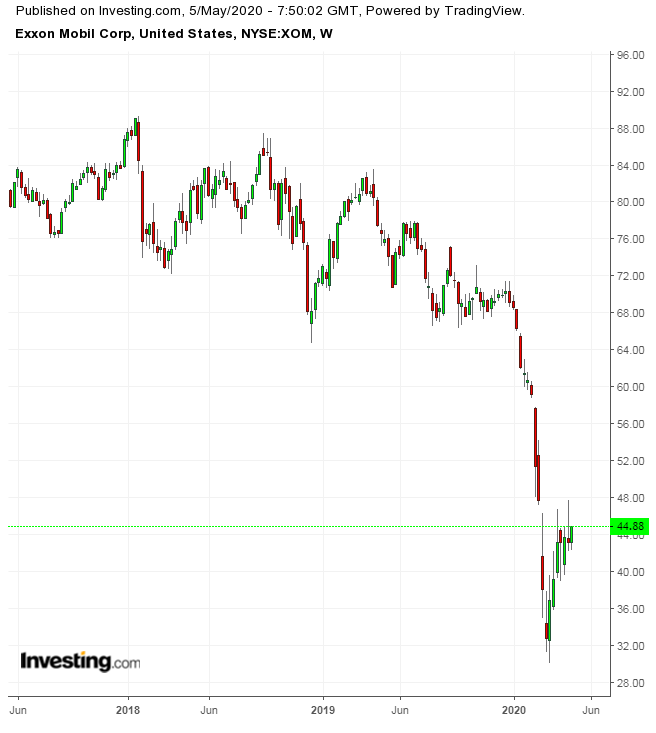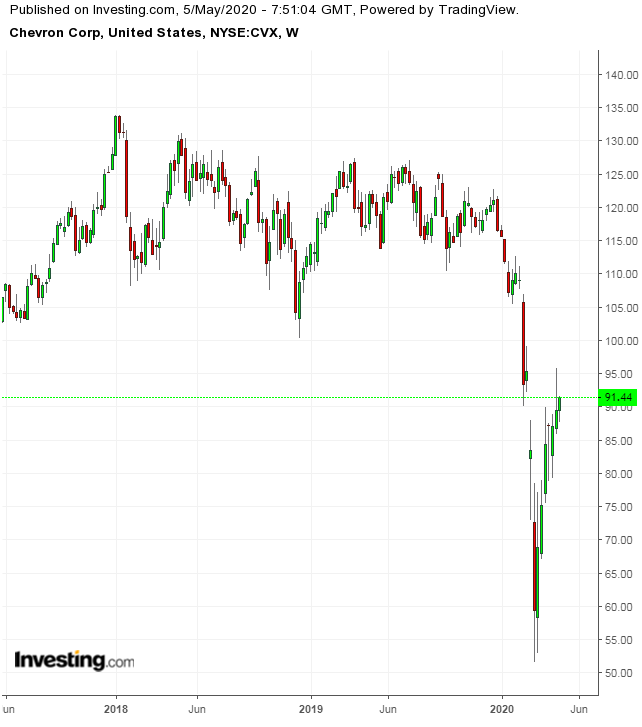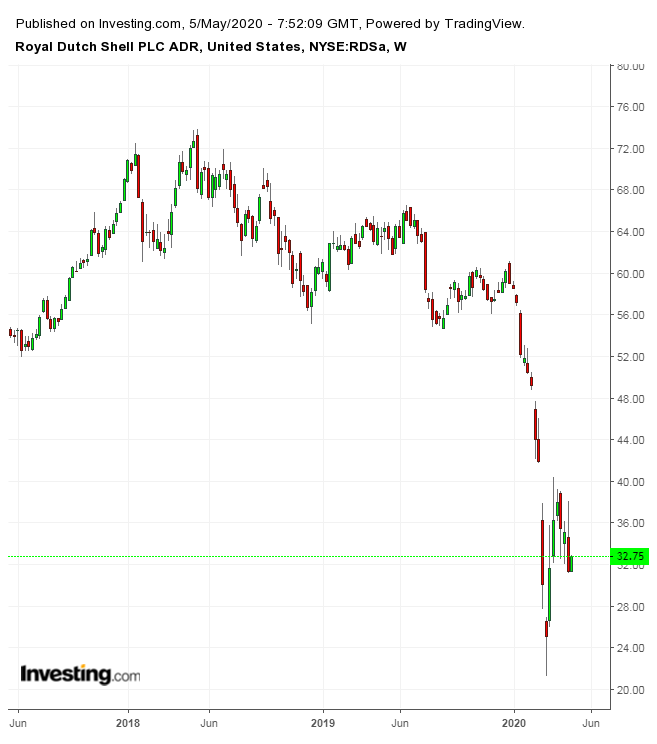The global oil industry is in the midst of a severe downturn, a result of the COVID-19 pandemic and its impact on national economies. In order to maintain corporate health, the world’s largest and strongest energy producers, often referred to as oil supermajors, are cutting output, laying off thousands of workers, and slashing their once sacrosanct dividends as they struggle to preserve cash.
Even as this massive restructuring takes place, investors are looking for signs of demand revival so they can take advantage of these companies' beaten-down stock prices.
Below, a review of the key points reported during last week's quarterly earnings releases from the world’s big-three oil companies. Our goal: to find out whether these players see the bottom in demand destruction that slashed the benchmark Brent crude price to $26 a barrel from $70 about four months ago.
1. ExxonMobil: Seeing Encouraging Early Signs
Exxon Mobil (NYSE:NYSE:XOM), the largest U.S. producer, posted its first loss in at least three decades, reporting a $610 million hit after it took $3 billion in writedowns during Q1 2020 when it released results on Friday, May 1.

The global economic shutdown has forced Exxon to cut $10 billion from its planned capital expenditures in 2020, a 30% budget cut. The Irving, TX-based oil and gas exploration and production giant has entered this crisis at a time when it was in the process of pursuing a radical approach to creating value.
While other oil firms were focusing on strengthening their cash positions by avoiding big ticket investments, Exxon was spending significantly on new initiatives.
Despite bleak oil demand forecasts for after the pandemic, Exxon maintained its long-standing optimism about future demand growth. Indeed, the company opted to maintain its now whopping 8.07% yielding quarterly dividend, which provides an annual $3.48 a share payout.
During the earnings call, CEO Darren Woods told investors:
“We’re seeing improvements really across all three markets, we’ve seen in May volumes trending up in Europe, we see that happening in the US, and we see that also in Asia,”
“There are some, I’d say, encouraging early signs.”
Nonetheless, shares of Exxon are currently down 37% this year.
2. Chevron: Bumping Along A Bottom For Energy Demand
Exxon rival, Chevron (NYSE:CVX) reported $3.6 billion in profits in the first quarter, up 36% from the same period last year, during it's Q1 2020 report on Friday. However, it said it expects its financial position to weaken later in the year due to the pandemic triggered oil-price crash.

Chevron also announced additional budget reductions, saying it would cut capital expenditures by $2 billion on top of the $4 billion it had announced just weeks earlier.
“The industry and the world are in a tough place right {{0|now} },” Chevron Chief Executive Mike Wirth said in a Wall Street Journal report.
“It feels like we’re bumping along a bottom for energy demand when we look at the data. But it doesn’t say it’s going to snap back.”
Wirth stressed though, that the company's quarterly dividend, which currently yields 5.77% with an annual payout of $5.16, remains a priority.
Unlike Exxon, Chevron was already in defensive mode after a massive writedown of natural gas holdings at the end of last year prompted it to absorb the worst loss in more than a decade. That divergence is helping the producer’s stock which is rebounding more quickly than Exxon shares from the March 23 low. Chevron's stock is down 26% this year.
3. Royal Dutch Shell: Drastically Slashing Its Dividend
Among the oil supermajors, the biggest disappointment came from Royal Dutch Shell (NYSE:RDSa) which announced, on Thursday, April 30, when it reported Q1 results, that it was drastically slashing its dividend for the first time since at least the Second World War.

Shell will save $10 billion annually as the quarterly payout falls to $0.16 per share from $0.47 previously, with a concurrent drop in yield from 9.89% previously to 4.09% at time of writing. The company’s adjusted net income was $2.86 billion in the first quarter, down 46% from a year earlier.
Shell made this decision because it faces a “crisis of uncertainty” about energy consumption, prices and maybe even about the viability of some of its assets, Shell Chief Executive Officer Ben van Beurden said in an interview with Bloomberg TV. The dividend cut was based on “quite a bleak scenario” and “we don’t know what will be on the other side of this pandemic.”
The pandemic will result in lasting changes to the world’s energy consumption and it’s hard to say if oil demand will ever return to levels seen in 2019, van Beurden said. Shell's stock is down 45% since the start of the year.
Bottom Line
The massive cuts made by oil companies show that recovery in oil demand will be a slow and lengthy process. That uncertainty will continue to add risk to their shares even after the significant pullbacks during the past two months.
